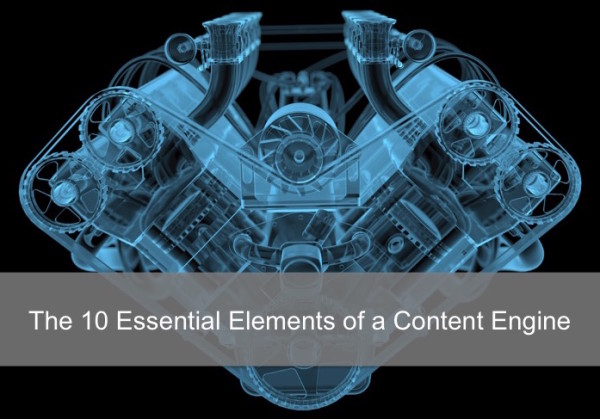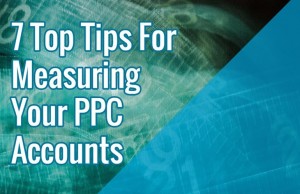By Tom Treanor, Published October 28, 2014

Content marketing is a critical component of your company’s marketing strategy. In order to be successful marketing with engaging, educational or entertaining content, it’s essential that you have a “content engine” in place.
What’s a Content Engine?
A content engine is the people, processes and tools that deliver high quality, targeted and consistent content in a variety of media types including blog content, webinars, ebooks, infographics and slides.
So what’s required to develop a Content Engine for your business? How do you develop the capabilities to produce powerful content that separates you from your competition, attracts prospects and appears more than once in a blue moon?
Here are the essential components of a content engine:
1) Executive Buy-in
If you’re lucky enough to be working for a company where the executives “get” content marketing, then you’re in good shape. If not, use the resources available in the Content Marketing Institute library to make the case that strategic content that helps prospects, customers and partners find, like, engage with, follow and connect with your company are a good thing.
2) Strategic Context
Strategic context is a key input for the content engine. Garbage-in, garbage-out is the saying (and it’s fitting). The inputs for the content engine will determine the quality of the outputs. Your content marketing efforts don’t stand in isolation to your company’s broader strategy and the marketing strategy. In addition, other key inputs include a content marketing strategy and target segments with relevant personas with prioritization and details on roles, pain points, interests, and desires.
3) A Content Hub
In most cases your company website serves as the hub of most of the market-facing content. This “hub” should include all of the standard pages that prospects expect (e.g. products, about, pricing, demos, contact us). It also should include key content marketing tools such as the company blog and resources pages (e.g. pages that feature relevant videos, webinars, ebooks)
Business blogs are built to be published to often. They make social sharing easy. The writing style can be more casual and articles can literally be produced and published same day (while web pages typically take a lot more fine-tuning and reviewing).
The resource pages can be built linking off the blog and/or website for things like webinars, ebooks, videos, white papers and more. These resource pages can focus on specific topics or types of readers. Or they can be more generic, including all of the resources your company would like to promote to any visitor.
Your content hub should have an appealing design, social sharing buttons should be in place (so people can share your content easily from the site), visuals should be featured and it should allow topic or persona-based navigation so people can find the content that resonates with them and their current situation.
In most cases, you’ll need a strong working relationship with your web team and you should build as much flexibility as possible into the blog (or other parts of your hub) so the team can do minor updates themselves such as putting up content or changing out things like an ebook banner.
4) Content Creators
All content, whether it’s a blog post, ebook or video needs to be researched, written, storyboarded and produced. You need people who can write, edit, visualize and ultimately manage the production of the various pieces of content based on the priorities (and other inputs) provided. Make sure you have resources lined up either internally or externally based on your content requirements. Ideally these producers are familiar with the nuances of content marketing, social media marketing and search engine optimization. This will save you time with training and post-creation modifications.
5) Designers and “Content Technicians”
In most cases your content producers can’t completely finish much of the content (although I strive to get them doing as much as possible on their own). This is where the “content technicians” come in. These are your graphic designers, video editors, infographic specialists or ebook producers. These people don’t need to know your business, but they do need to be able to understand your goals and polish or design to create small pieces of “business art”. Similar to the content producers, the more they understand about content marketing and associated disciplines the better as it will save you time and hassle.
6) Strong Social Media, Advertising, SEO & Marketing Automation Connections
Your content will be the proverbial tree crashing quietly in the forest unless you are working intimately with one or more (and hopefully all) of the teams mentioned above. Content and social media marketing need to work hand-in-hand. Content should be created with an eye so social share-ability (great headlines, pictures optimized for social, easy to scan, etc.). Social should promote the content well, in the right places and often enough without being spammy. If the connection with the social team is broken or if content isn’t being promoted quickly or enough, that will stall the spread of your content.
Similarly, the more content is SEO-optimized, the better it will do in the search engines. Working with search specialists to optimize during creation will save time and improve results. Social advertising, pay-per-click advertising or retargeting are other key ways to promote your great content.
Marketing automation allows you to collect email addresses or other content information from prospects who visit your site. You’ll want to work closely with this team so you can use calls-to-action such as a banner for an ebook or webinar to collect information on these prospects. Then you can establish a longer term relationship by nurturing them (via email) with targeted content such as relevant blog posts, ebooks, templates or webinars (e.g. CFOs should get content that CFOs care about; marketers should get content that marketers care about).
Establish strong bonds with these teams to ensure the proper spread of your content, to aid in discover of your content and to turn one-time visitors into repeat visitors.
7) Workflows, Asset Management and Collaboration Tool
It’s impossible to scale your content engine without having clear and easy-to-use workflows in place. Establish standard processes, timelines and approval flows that happen each time. This prevents the “Why did that ebook get released without me seeing it!” or “I thought the design team was working on it but they’re not!” moments.
In most cases, this requires having a workflow, collaboration or project management tool that allows for the creation, usage and tracking of the workflows used for your content engine. In addition, assets such as graphics, pictures, video and written content need to be stored centrally and they need to be easy to access and find. Workflows and the content associated with each project need to be intimately connected – either in the same collaboration tool or a linked asset management tool.
8) Editorial Calendar
You’ll need to have an editor in place who can take the strategies and priorities described above and generate content ideas as well as collect various ideas that will come from research, hallway conversations or other sources… and turn it into a logical editorial calendar.
The editorial calendar is the list and description of the content that your content producers need to research and create, all laid out on a timeline.
Long Term: It’s important to have two views – one view is long term and includes big items such as big events, holidays, produce releases and big content projects or campaigns. In the long term view, the editor needs to plot out these big items and decide the implications for the content team. Will videos be needed? Are webinars planned? Is there a major ebook required? Work backwards and determine what’s needed and the timing.
Short term: This is the calendar where the rubber meets the road. In this calendar the editor can list out the cornerstone content (the big ebooks, webinars or videos, for example) that take more work, will have a major impact on the audience and will attract significant attention if marketed correctly. The other content can be related but smaller content including blog posts, checklists, infographics or even social media posts (although I typically don’t drill into that last part in my calendars). These smaller items can support the generation of interest in the cornerstone content and can drive sign-ups via calls to action in the posts or on the blog, website and in social media accounts (but don’t overdo).
Other considerations include goals of the content. Are the pieces of content designed to drive awareness like a blog post or slideshare that will share well in social media (top of the funnel), to turn visitors into prospects by collecting contact information, like a useful ebook (middle of the funnel) or to convert someone to a trial or sale, like a case study showing specific use cases of your product (bottom of the funnel).
9) Voice and Brand Guidelines
Brand voice is the style of writing, look and attitude that the company uses for its content. Typically it’s intended to both express the personality of the company as well as to resonate with the prospects and customers. Brand guidelines can include things related to colors, design do’s and don’ts, use of logos, font requirements and other specifics that help company’s unify their brand appearance to the outside world.
If brand guidelines exist, make sure all of the teams are well aware of the guidelines. For brand voice, a certain tone may already exist or can be developed by the content marketing team or the broader marketing team (working with other company stakeholders).
10) Analytics
To measure the success of your content marketing efforts, you need to understand, ultimately, how many new leads and/or revenue your content drives. In addition, you should be able to track other key indicators such as website visitors, social media shares, links from other websites and search engine traffic. Analytics should be in place to measure the results of your content marketing efforts. There will be holes in your data, but makes sure you have at least basic analytics (like Google Analytics) in place as a start and that you measure new leads and sales (and the source of these leads).
Is Your Content Engine Revved Up?
Do you have all the key components in place? More importantly, are you able to take the inputs and create compelling content in a variety of media types easily, quickly and with high quality?
What components are you lacking and why? Let us know in the comments.
Business Articles | Business 2 Community
(297)









